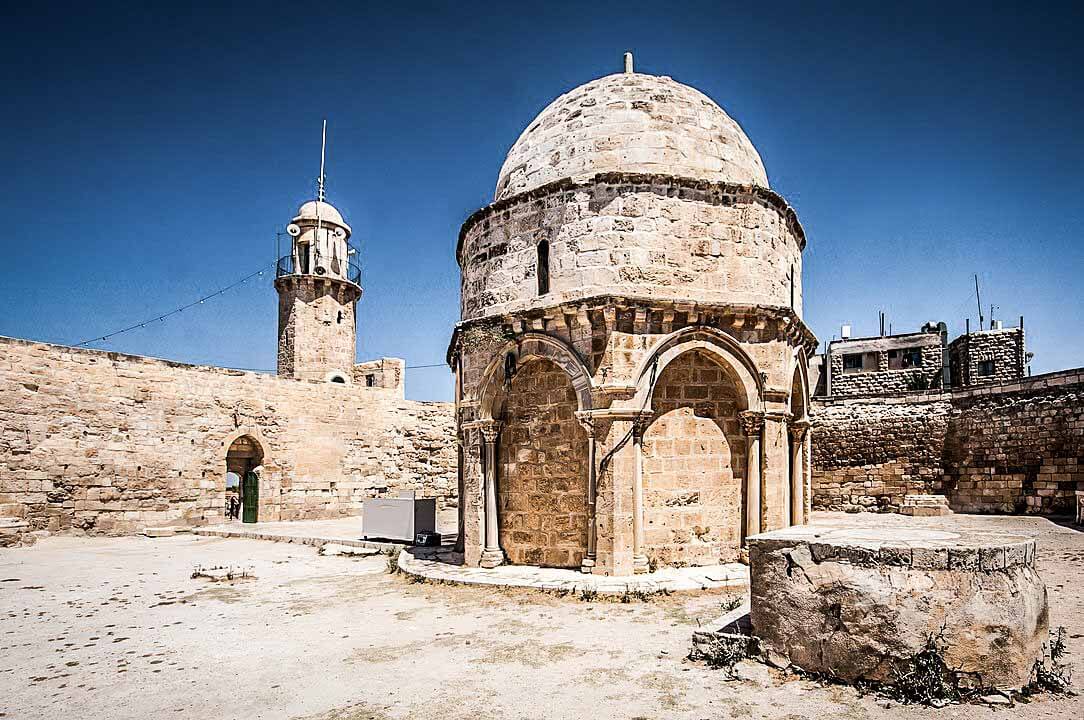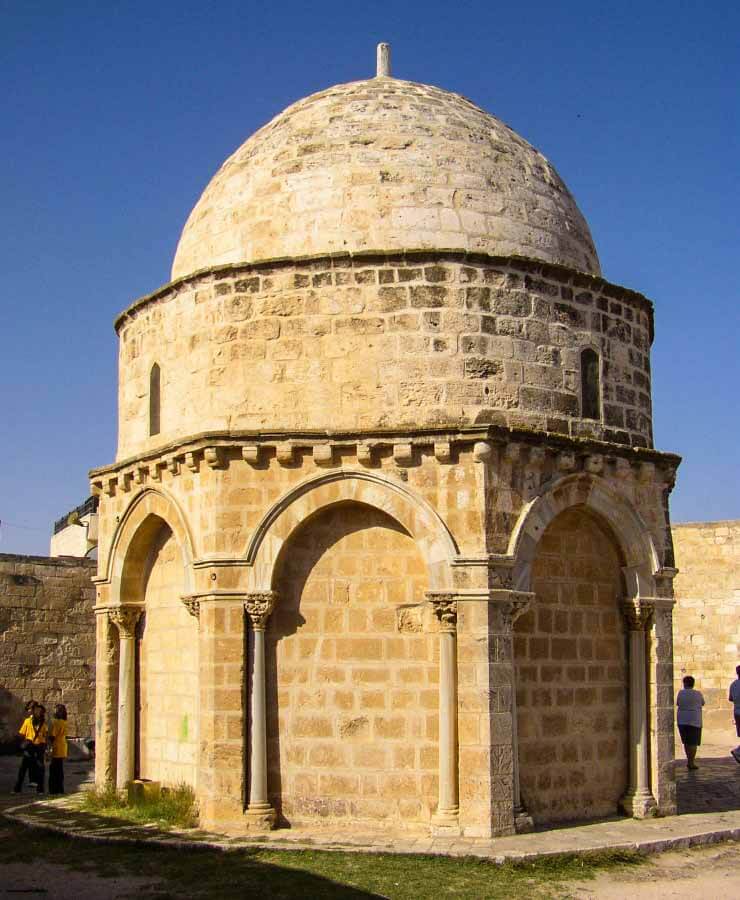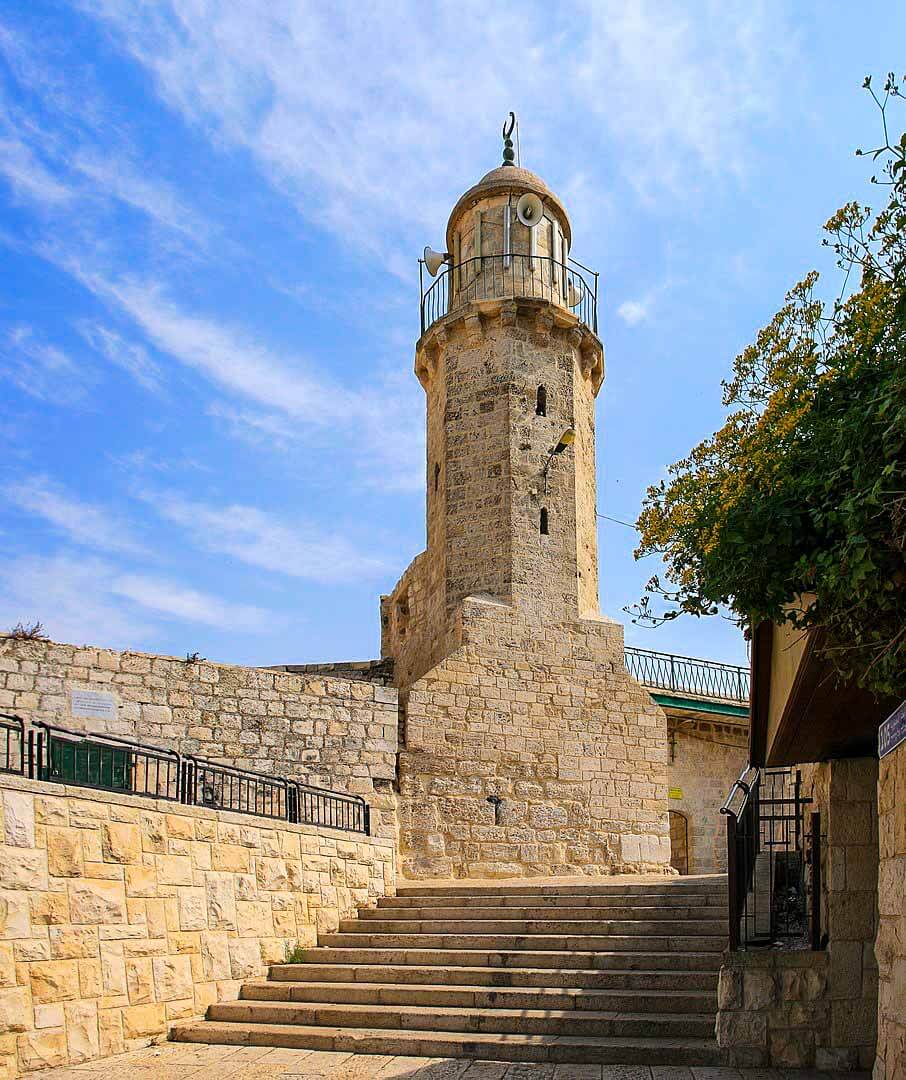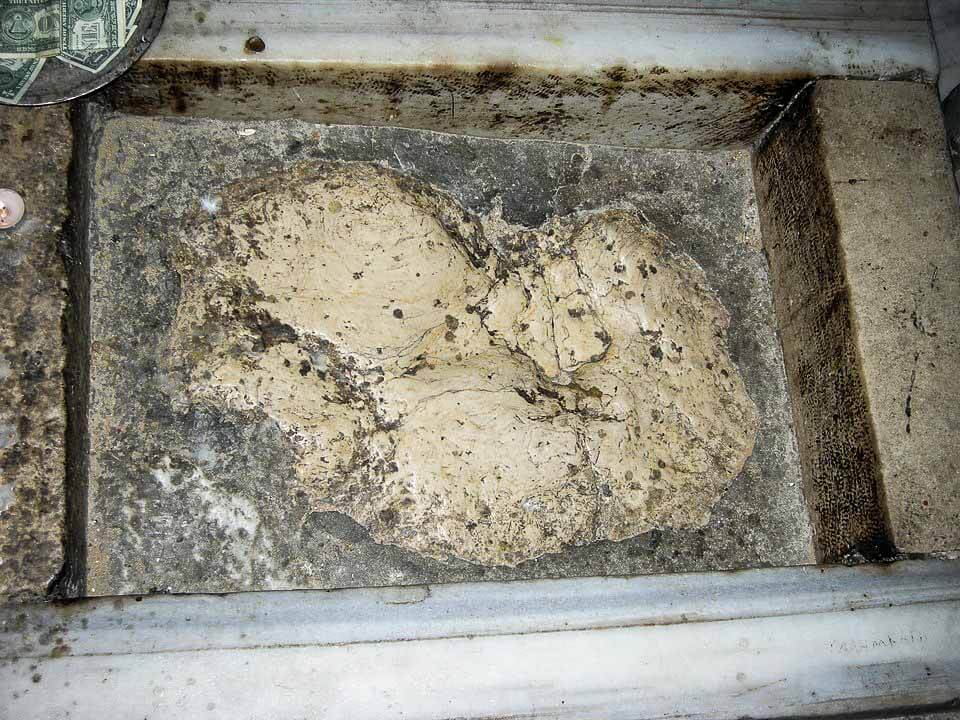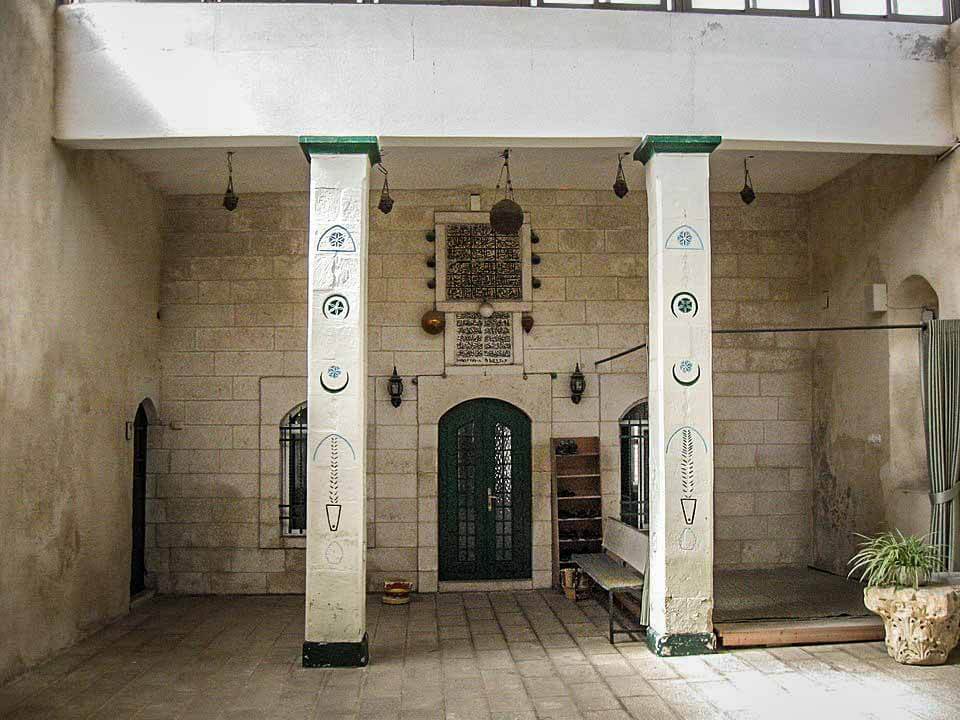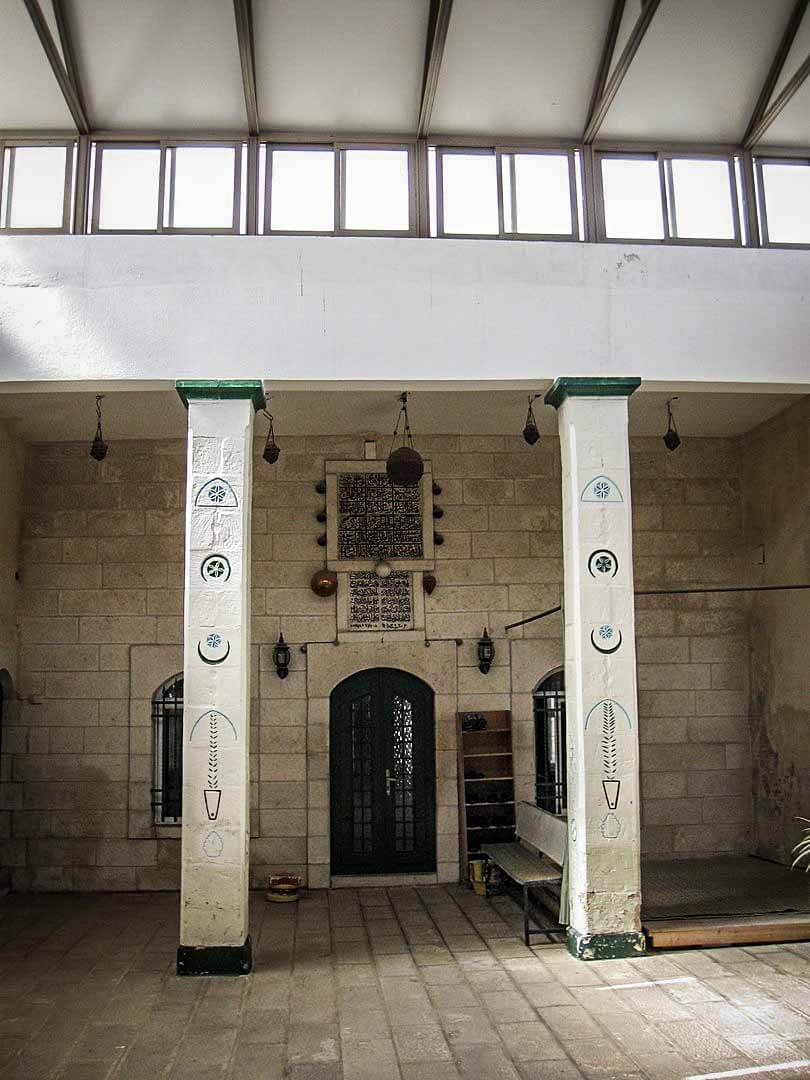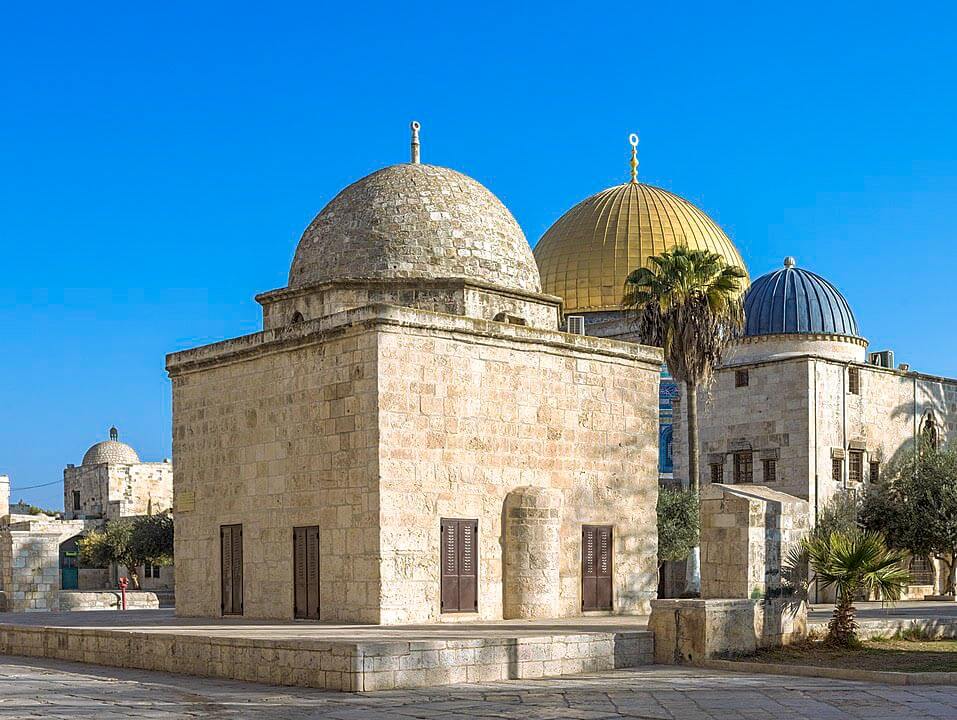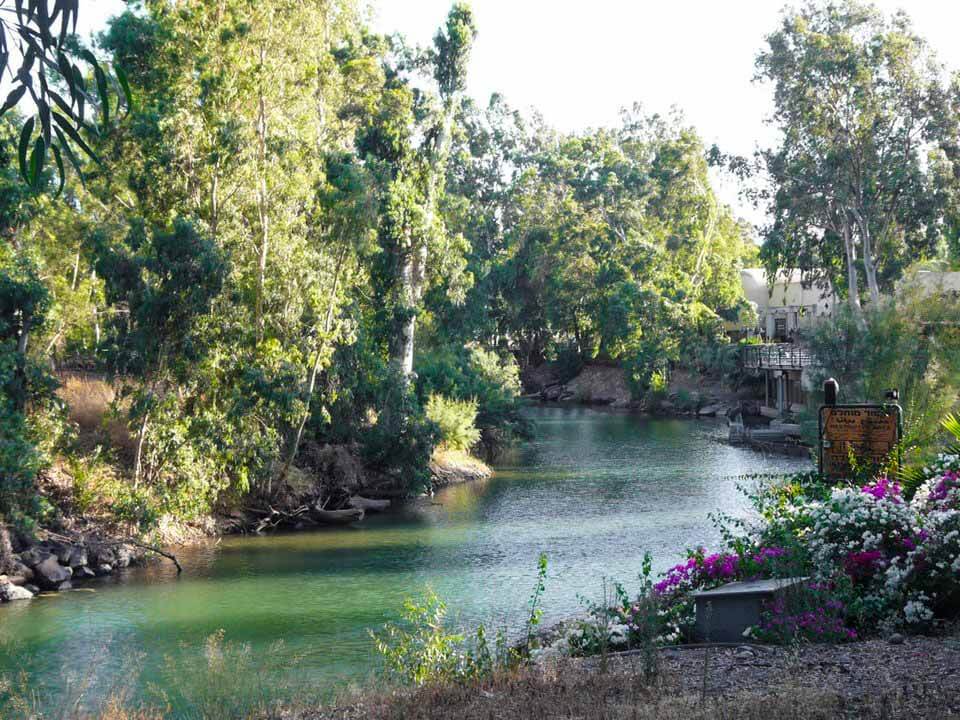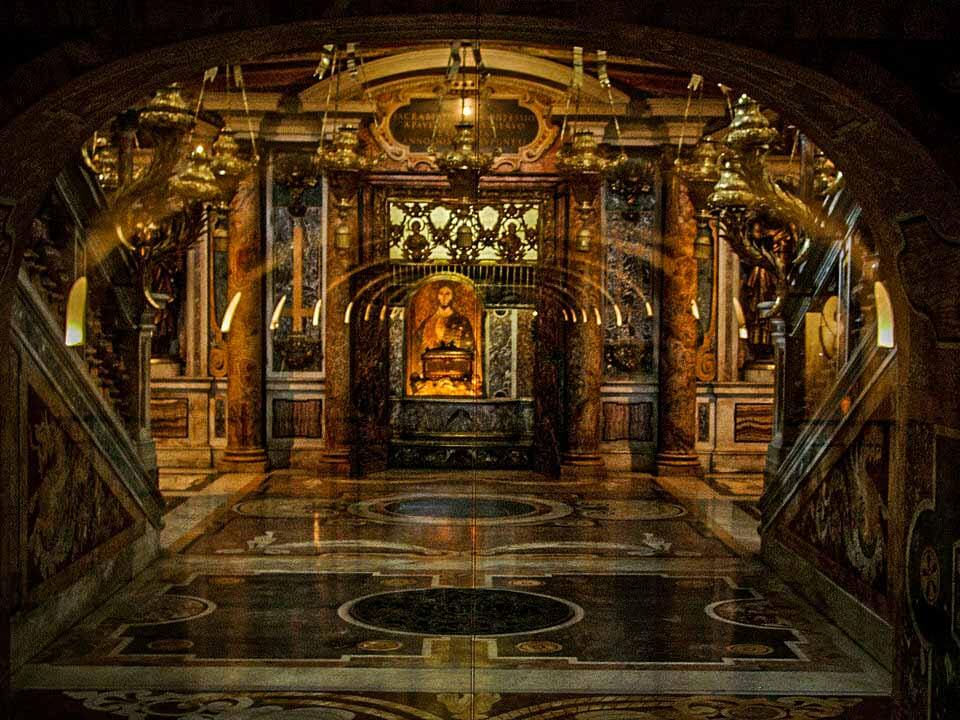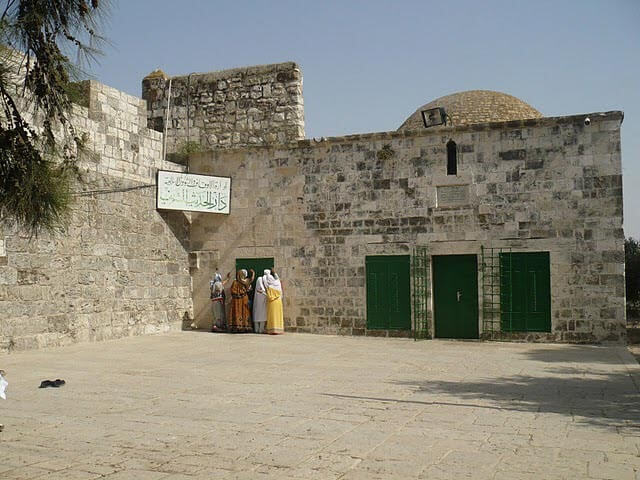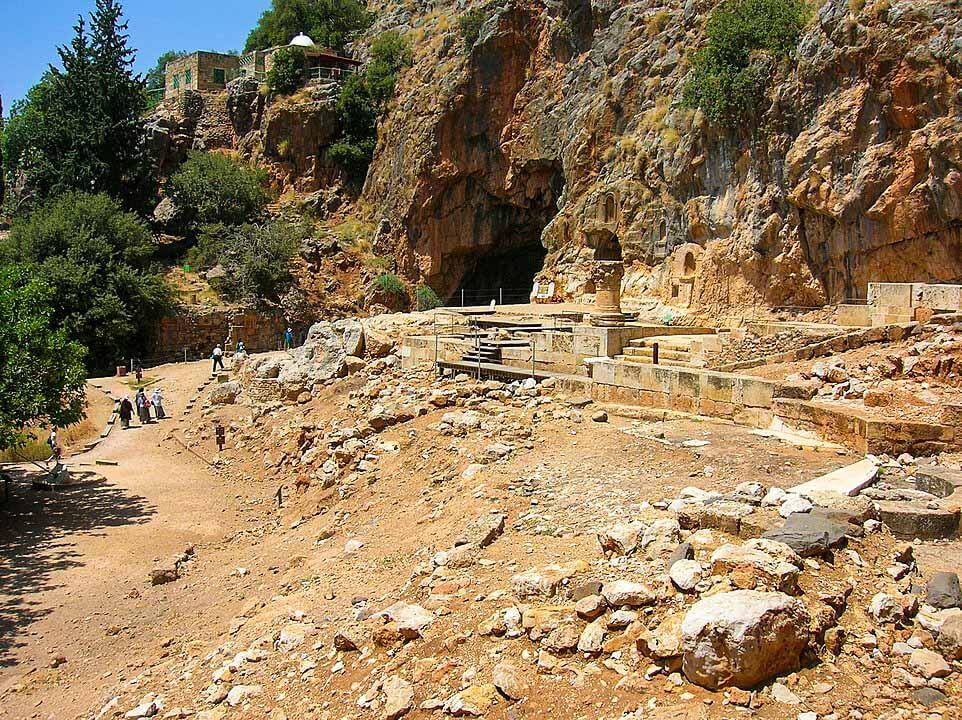Jerusalem, Palestine
Coordinates: 31.778915, 35.245056
Also called as Chapel of the Ascension is a shrine located on the Mount of Olives, in the At-Tur district of Jerusalem.
It is located on a site the faithfuls, both muslims and christians, traditionally believed to be the earthly spot where Hz. Isa عليه اسلام ascended into Heaven.
It houses a slab of stone believed to contain one of His footprints. The Status Quo, a 250-year-old understanding between religious communities, applies to the site.
Mosque of Ascension
After the fall of Jerusalem in 1187 the ruined church and monastery were abandoned by the Christians, who resettled in Acre.
During this time Hz. Salahuddin رحمة الله عليه established the Mount of Olives as a waqf entrusted to two sheikhs, al-Salih Wali al-Din and Abu Hasan al-Hakari.
This Waqf (Islamic trust) was registered in a document dated 20 October 1188. The chapel was converted to a mosque, and a mihrab installed in it.
Because the vast majority of pilgrims to the site were Christian, as a gesture of compromise and goodwill Hz. Salahuddin رحمة الله عليه ordered the construction, two years later, of a second mosque nearby for Muslim worship while Christians continued to visit the main chapel.
Also around this time the complex was fortified with towers, walls, and guarded by watchman.
Though still under the authority of the Islamic Waqf of Jerusalem, the edicule-turned-mosque is currently opened to visitors of all faiths, for a nominal fee.
Structure
The main structure of the chapel is from the Crusader era; the stone dome and the octagonal drum it stands on are Muslim additions.
The exterior walls are decorated with arches and marble columns. The entrance is from the west, the interior of the chapel consists of a mihrab indicating the direction of Mecca sharif in the south wall.
On the floor, inside a stone frame, is a slab of stone called the “Ascension Rock”.
Footprints on ascension rock
The octagonal ædicule surrounds the Ascension rock, said to contain the right footprint of Christ, the section bearing the left footprint having been taken to the Al-Aqsa Mosque in the Middle Ages.
The faithful believe that the impression was made as Hz. Isa عليه اسلام ascended into Heaven and is venerated as the last point on earth touched by him.
The zawiya of Bibi Rabi’a al-‘Adawiyya رحمة الله عليها (Bibi Rabi’a Basri رحمة الله عليها)
The mosque that stands southwest of the former Church of the Ascension, known as the zawiya of Rabi’a al-‘Adawiyya رحمة الله عليها, consists of two edifices: the upper one, or the mosque proper; and at the lower end of a staircase connecting the two structures, an underground chamber or burial cave, which includes a 2 m deep, 1.2 m wide and 1.8 m high cell on its east side.
Christian, Jewish and Muslim traditions avout the tomb
The burial crypt is revered by three separate monotheistic religions, although opinion differs on the occupant.
Muslims believe that the 8th-century Sufi mystic and wali, Bibi Rabi’a Basri رحمة الله عليها is buried there.
Jews maintain it contains the 7th-century BCE prophetess Huldah,
Christians believe it to be the tomb of the 5th-century saint Pelagia, one of three saints all known as Pelagia of Antioch;
A 19th-century witness, Rabbi Yehosef Schwartz, describes how worshippers of all three religions used to pray next to each other at the tomb.
Muslim tradition about the tomb
What the different traditions have in common is that all three venerated figures are women.
The mid-14th work of Muthir al-gharam fi ziyarat al-Quds wa-sh-Sham (“Arousing love for visiting Jerusalem and Syria”) places the death year of Bibi Rabi’a Basri رحمة الله عليها around 781/82 and has her buried in this cave.
Other historians, such as al-Harawi (d. 1215) and Yaqut (1179–1229) locate Bibi Rabi’a Basri’s رحمة الله عليها grave in her hometown of Basra, and attribute the Mount of Olives tomb to another Rabi’a, wife of a Sufi from the late Crusader and early Ayyubid period called Ahmad Ibn Abu el Huari.
Yet another Muslim tradition attributes the grave to Rahiba bint Hasn, a woman of which nothing is known.
Christians and Jews traditions about the tomb
Both Christians and Jews have long had the custom of walking through the narrow space between the tomb and the wall.
Christians believed that sinners cannot perform the task and can be recognised in this way, and Jews who managed to walk around the tomb seven times expected forgiveness of all sins and prosperity.
Burial crypt
The crypt is situated east of the mosque, and connected to it by a staircase, and the cell lies opposite the entrance.


